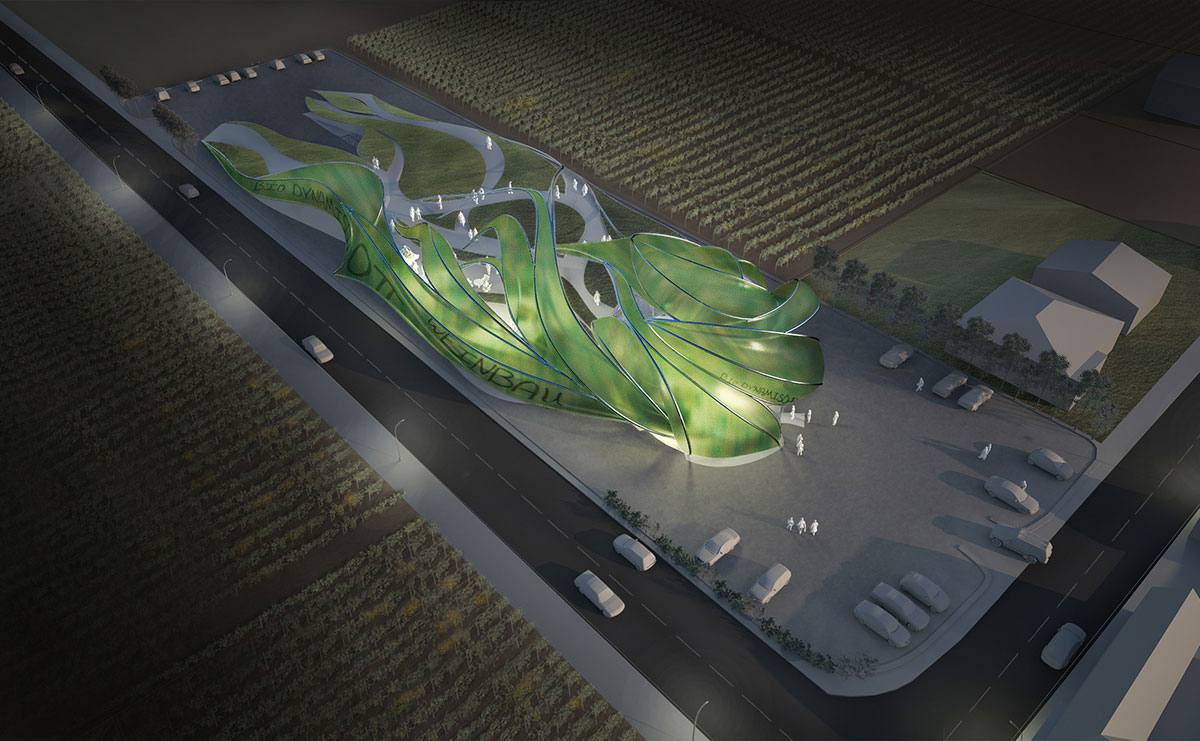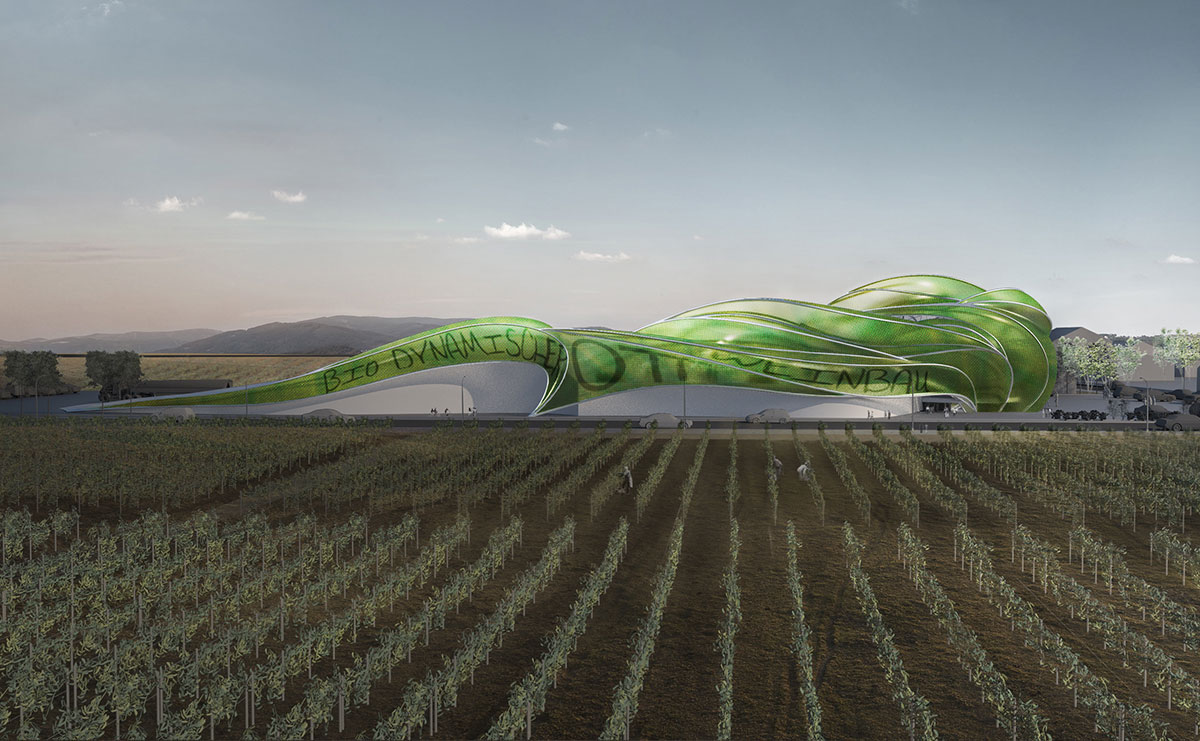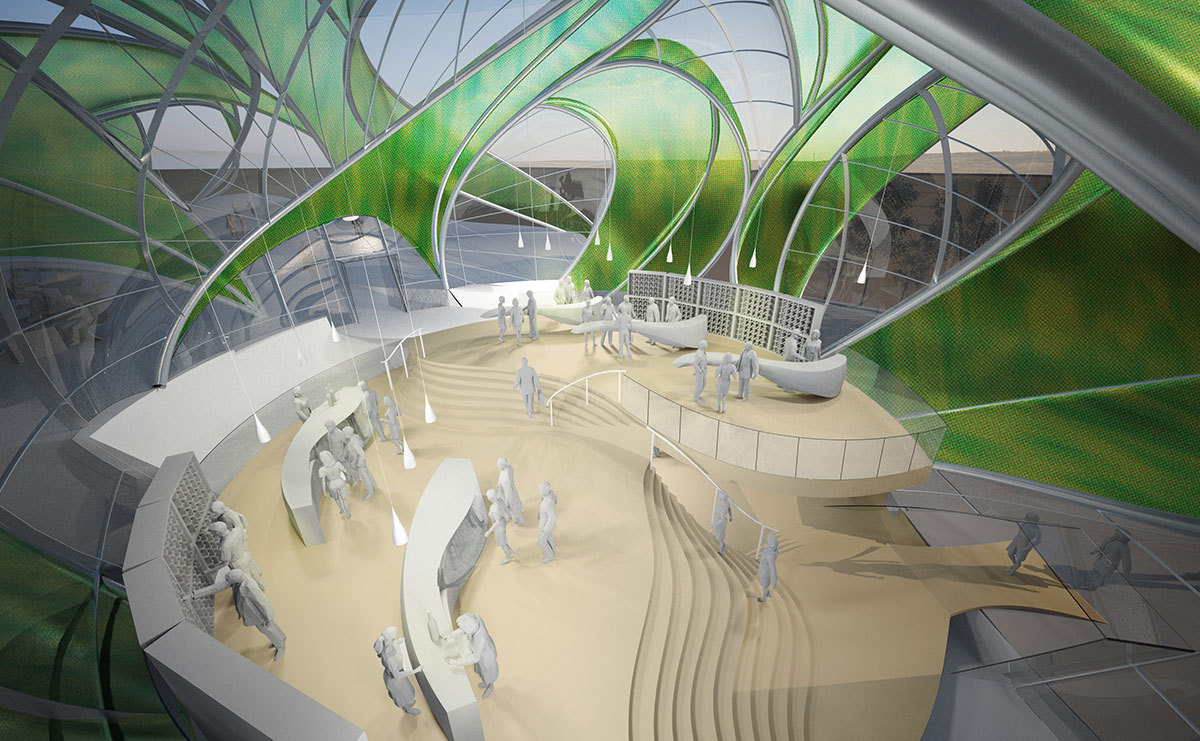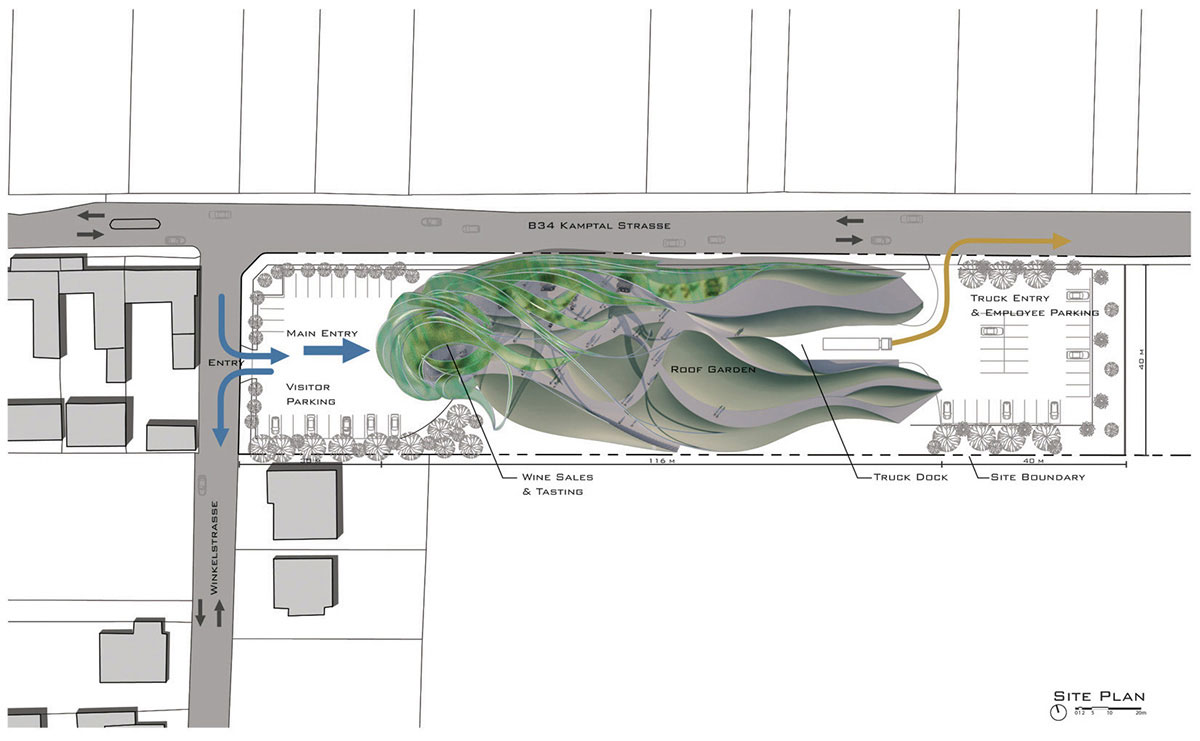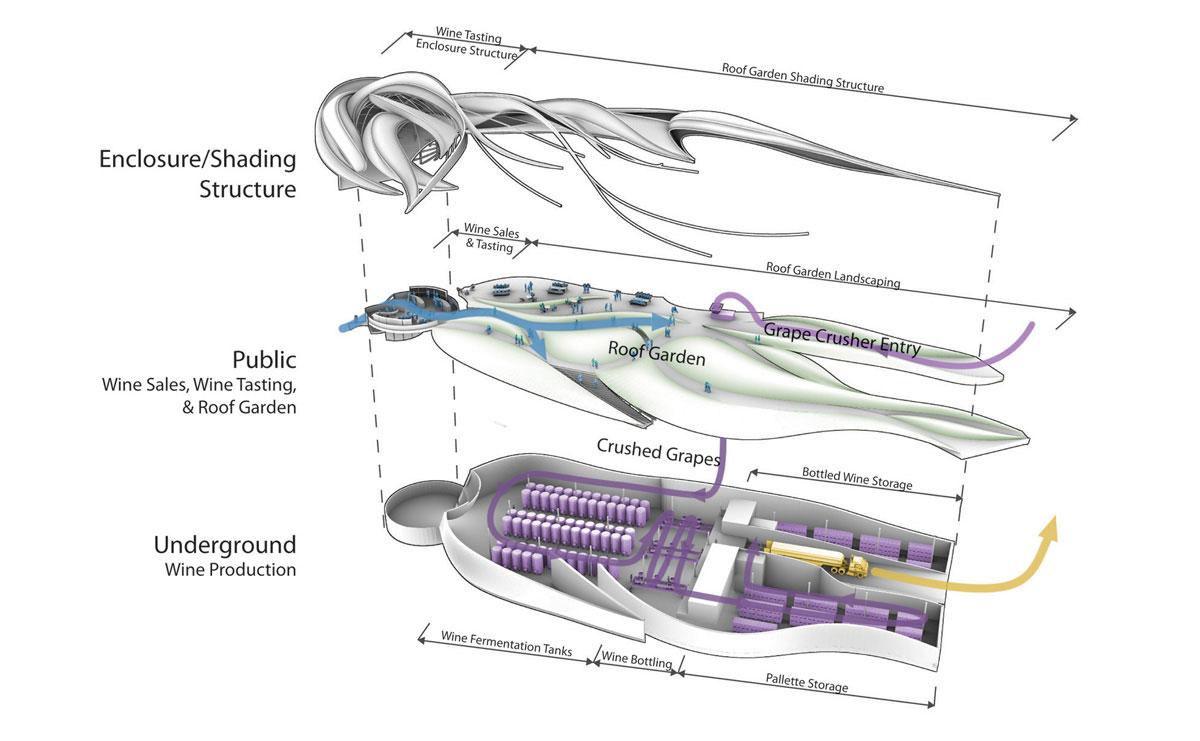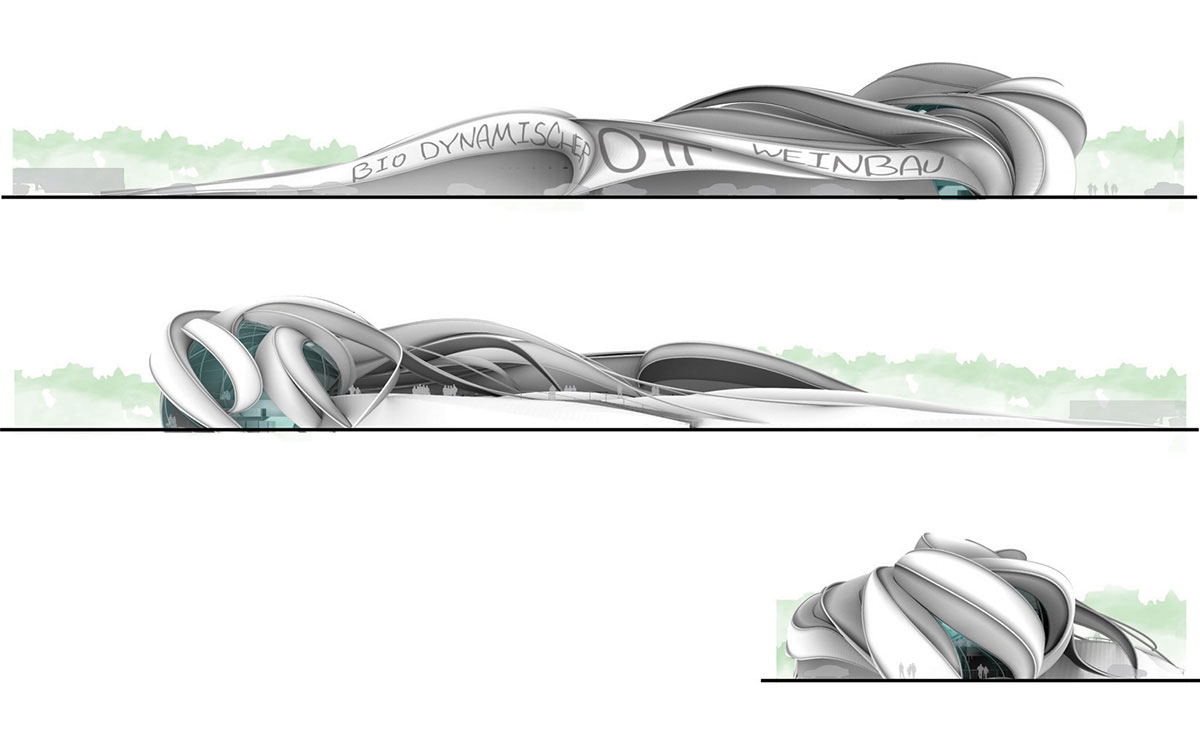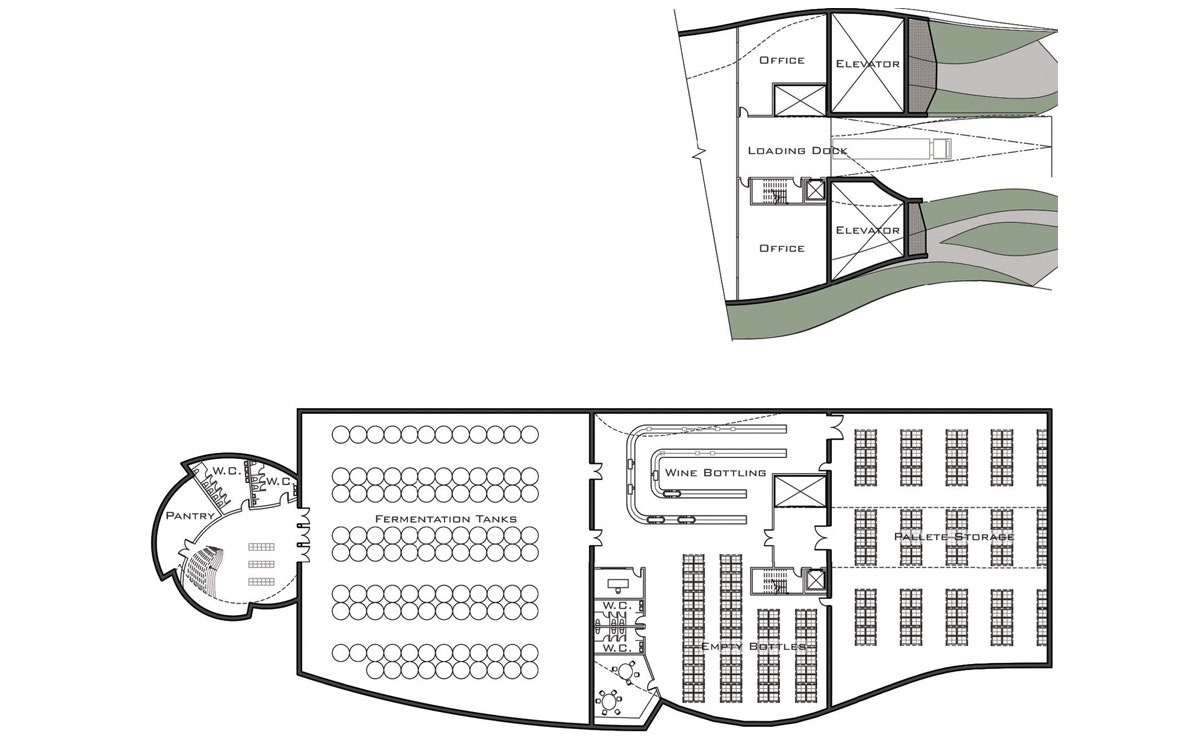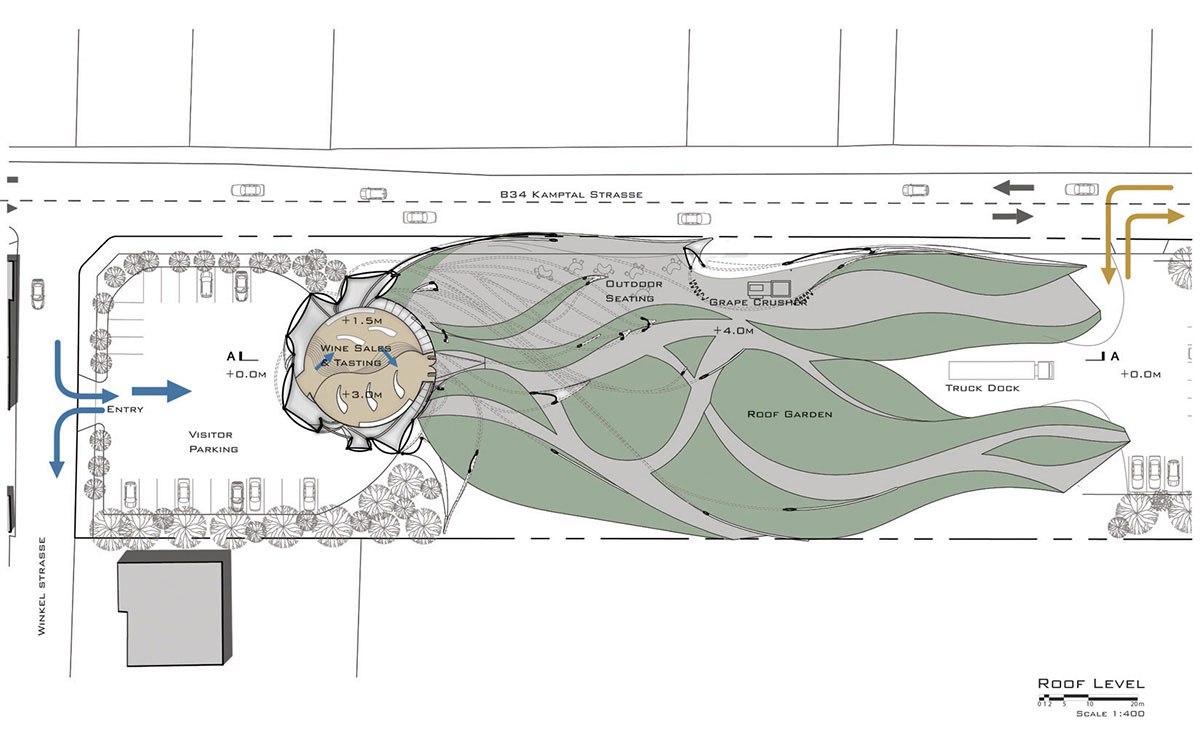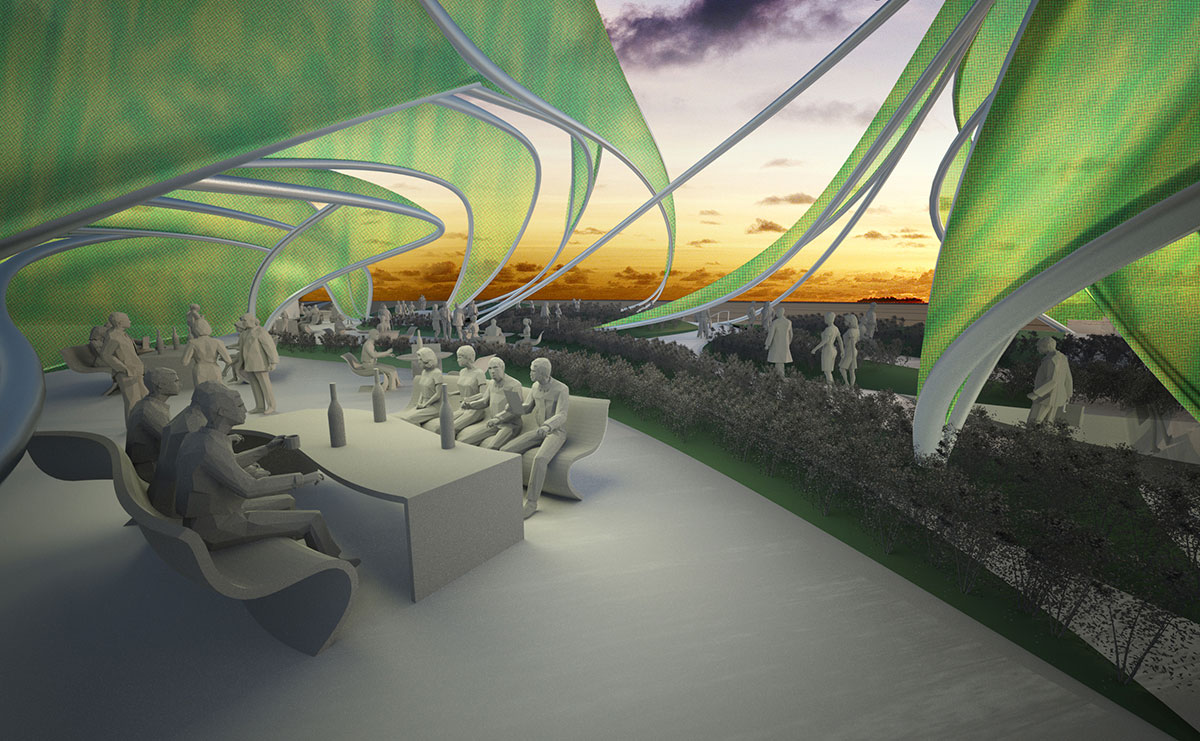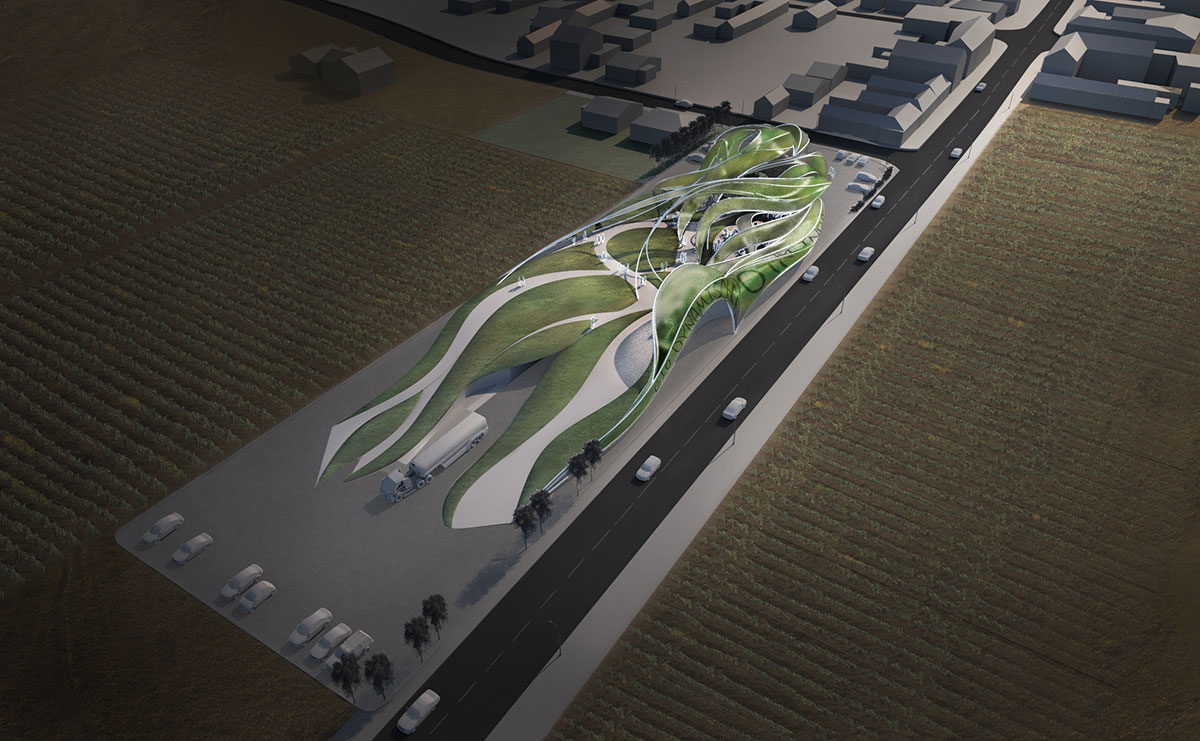OTT Winery
Client: Bernhard Ott
Program: Winery
Size: 3,500 sqm
Budget: Withheld upon owner's request
Completion Date: October 18th 2011
Built: In progress
Material: ETFE foil, glass, steel pipe
Architect: Herwig Baumgartner, Scott Uriu
Team: Nema Ashjaee, Andreas Wohofsky
Consultant: Architektur Maurer (executive architect)
OTT Winery
The proposal for the OTT Winery called for the creation of a world-class winemaking facility and tasting room characterized by a state-of-the-art biodynamic winemaking production. This design, intended to become an important landmark building in the region, emphasizes the colorful, natural beauty of the landscape and defines a destination for wine lovers and wine retailers alike.
The site is located in Feuersbrunn, just outside of Vienna, in lower Austria, where Bernhard Ott has developed this family-owned vineyard into one with an internationally acclaimed trademark for the highest-quality wine. Ott prides himself on utilizing biodynamic agriculture in his winemaking process, so we designed a large outdoor roof garden—connected to the tasting room—that promotes the process of biodynamic winemaking.
Our proposal consists of three main components: the Production Hall, the Green Roof, and the Tasting Room.
The Production Hall is placed partially underground in order to provide a constant temperature for the wine and includes a pressing area, fermentation tanks, bottling facilities, storage space, and a loading dock for distribution. It is designed based on the precepts of gravity-flow winemaking; we located the main components of the process on different levels so that the wine can flow naturally from one processing area to the next without ever having to be pumped.
A thick layer of soil, forming a Green Roof, covers the hall and helps to maintain a constant and cool temperature for the wine below; the garden on top showcases different herbs and plants used for the biodynamic wine-production process. The garden includes an outdoor seating area connected to the tasting room.
Most expressive architecturally of the proposal is the Tasting Room and retail area. The space is enclosed with a highly articulated envelope that stretches out to become a trellis and sunshade for the roof garden. The colorful and ephemeral quality of the envelope is realized with layers of a high-tech fabric enclosure, with color patterns printed on each layer. On the exterior, the trellis creates a visual and acoustical barrier between the garden and Kamptalstrasse to the north, while opening up towards the south and framing views of the landscape. From the street side, the trellis functions as a large sign that lights up at night and can be used to display different promotional content. Inside the tasting room, the floor plan is divided into three different zones that vary in height, with different levels for retail, wine tasting, and storage, while allowing for a gradual transition from the street level to the roof garden above.
The site is located in Feuersbrunn, just outside of Vienna, in lower Austria, where Bernhard Ott has developed this family-owned vineyard into one with an internationally acclaimed trademark for the highest-quality wine. Ott prides himself on utilizing biodynamic agriculture in his winemaking process, so we designed a large outdoor roof garden—connected to the tasting room—that promotes the process of biodynamic winemaking.
Our proposal consists of three main components: the Production Hall, the Green Roof, and the Tasting Room.
The Production Hall is placed partially underground in order to provide a constant temperature for the wine and includes a pressing area, fermentation tanks, bottling facilities, storage space, and a loading dock for distribution. It is designed based on the precepts of gravity-flow winemaking; we located the main components of the process on different levels so that the wine can flow naturally from one processing area to the next without ever having to be pumped.
A thick layer of soil, forming a Green Roof, covers the hall and helps to maintain a constant and cool temperature for the wine below; the garden on top showcases different herbs and plants used for the biodynamic wine-production process. The garden includes an outdoor seating area connected to the tasting room.
Most expressive architecturally of the proposal is the Tasting Room and retail area. The space is enclosed with a highly articulated envelope that stretches out to become a trellis and sunshade for the roof garden. The colorful and ephemeral quality of the envelope is realized with layers of a high-tech fabric enclosure, with color patterns printed on each layer. On the exterior, the trellis creates a visual and acoustical barrier between the garden and Kamptalstrasse to the north, while opening up towards the south and framing views of the landscape. From the street side, the trellis functions as a large sign that lights up at night and can be used to display different promotional content. Inside the tasting room, the floor plan is divided into three different zones that vary in height, with different levels for retail, wine tasting, and storage, while allowing for a gradual transition from the street level to the roof garden above.

